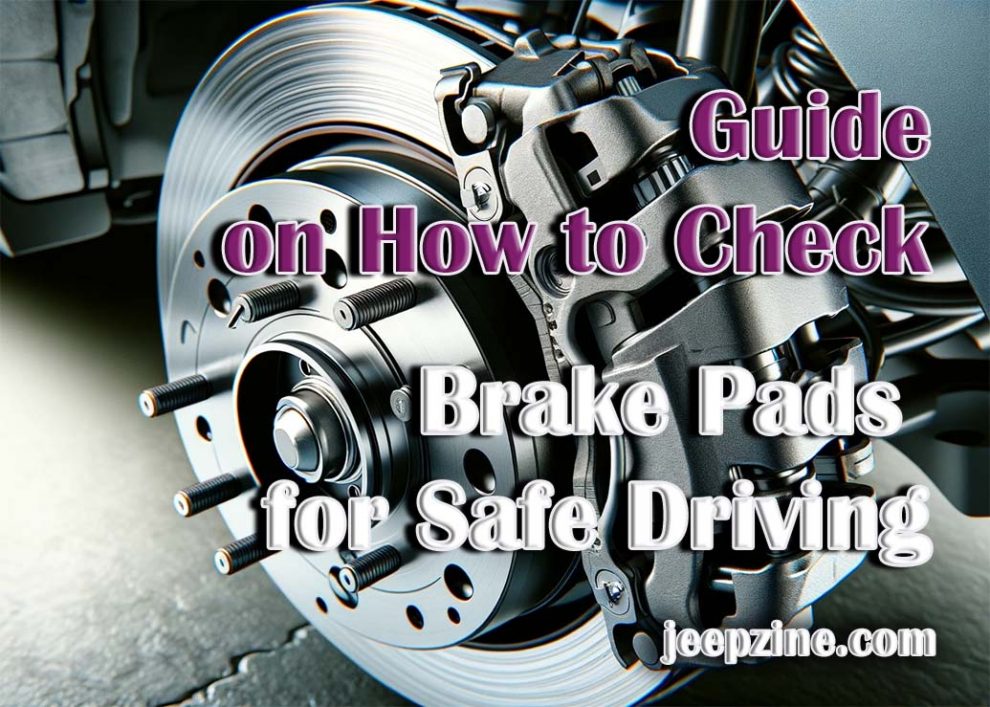Maintaining your vehicle’s brake pads is essential for ensuring safety on the road. The brake system is a critical component of any vehicle, allowing drivers to stop effectively and avoid potential hazards. Regularly checking your brake pads for signs of wear is a vital part of vehicle maintenance that can prevent costly repairs and, more importantly, keep you and your passengers safe. Understanding how to check brake pads is a straightforward process that drivers can perform to ensure their braking system remains in optimal condition.
Signs of Worn Brake Pads
Identifying worn brake pads early can save you from a nerve-wracking experience on the road. Common signs include a squealing or grinding noise when braking, a longer stopping distance, and the brake pedal feeling softer or more spongy than usual. Additionally, if the vehicle pulls to one side when braking, it could also indicate uneven wear on the brake pads. These symptoms suggest it’s time to inspect your brake pads and possibly prepare for their replacement.
Step-by-Step Guide on How to Check Brake Pads
Checking your brake pads regularly helps in maintaining your vehicle’s brake system’s integrity and effectiveness. Here’s how to conduct a thorough inspection:
-
Safety First: Ensure your vehicle is parked on a level surface and the engine is turned off. Use wheel chocks on the opposite side of the vehicle you’re inspecting.
-
Wheel Removal: Loosen the lug nuts slightly before lifting the car with a jack. Secure the vehicle with jack stands and then fully remove the wheel.
-
Inspect the Brake Pad Thickness: Look at the brake pads through the caliper. The pad should be at least 1/4 inch thick. If it’s less, it’s time to consider replacing them.
-
Check for Wear and Damage: Besides thickness, look for any signs of uneven wear or damage to the brake pads. Cracks, glazing, and crumbling material are indicators that the brake pads are past their prime.
Understanding Brake Pad Wear Indicators
Most modern vehicles come equipped with brake pad wear indicators that alert the driver to when the pads are becoming too thin. These indicators can be a small metal shim embedded within the brake pad itself, which creates a high-pitched squealing noise when it makes contact with the rotor, signaling that the pad material is low. Paying attention to these indicators is crucial for timely maintenance.
When to Consult a Professional for Brake Pad Replacement
While checking brake pads is a task many drivers can do on their own, determining when to replace them might require professional advice. If upon inspection, you find that your brake pads are worn down to less than 1/4 inch or exhibit significant wear and tear, it’s advisable to consult a professional mechanic. They can provide a comprehensive assessment and ensure that your brake pads, and if necessary, rotors are replaced correctly. For those driving specific models, like the Jeep Wrangler, choosing the best brake pads for Jeep Wrangler can significantly enhance your driving experience, a topic we delve into in another detailed article.
Conclusion
Knowing how to check brake pads is an essential skill for any driver, contributing to the overall safety and maintenance of the vehicle. Regular inspections can help identify when the brake pads are worn and in need of replacement, ensuring that your vehicle remains safe to drive. Always remember, the brake system is integral to your vehicle’s safety features, and maintaining its components should always be a top priority. Whether you’re driving a family sedan or a rugged Jeep Wrangler, keeping your brake pads in check ensures a safer driving experience for everyone on the road.


 Safety First: Ensure your vehicle is parked on a level surface and the engine is turned off. Use wheel chocks on the opposite side of the vehicle you’re inspecting.
Safety First: Ensure your vehicle is parked on a level surface and the engine is turned off. Use wheel chocks on the opposite side of the vehicle you’re inspecting.